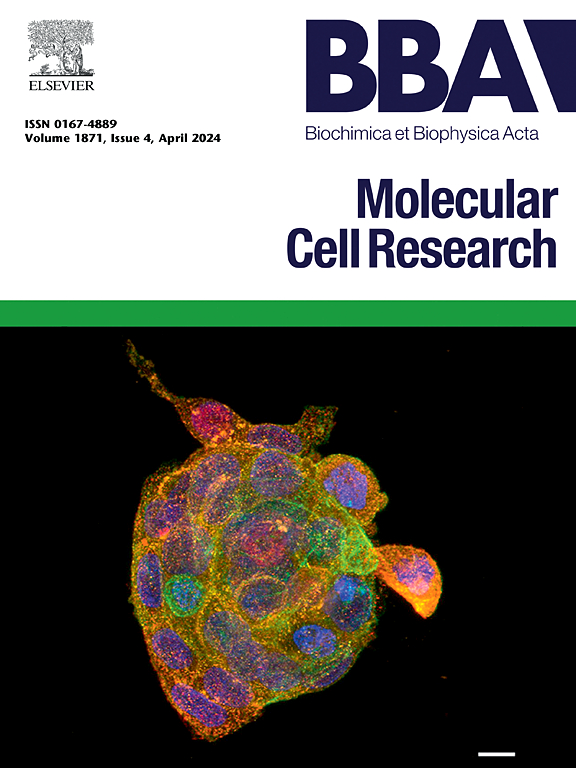Endoplasmic reticulum stress induced autophagy in cancer and its potential interactions with apoptosis and ferroptosis
IF 4.6
2区 生物学
Q1 BIOCHEMISTRY & MOLECULAR BIOLOGY
Biochimica et biophysica acta. Molecular cell research
Pub Date : 2024-10-26
DOI:10.1016/j.bbamcr.2024.119869
引用次数: 0
Abstract
The endoplasmic reticulum (ER) is a dynamic organelle that is a site of the synthesis of proteins and lipids, contributing to the regulation of proteostasis, lipid metabolism, redox balance, and calcium storage/−dependent signaling events. The disruption of ER homeostasis due to the accumulation of misfolded proteins in the ER causes ER stress which activates the unfolded protein response (UPR) system through the activation of IRE1, PERK, and ATF6. Activation of UPR is observed in various cancers and therefore, its association with process of carcinogenesis has been of importance. Tumor cells effectively utilize the UPR system to overcome ER stress. Moreover, ER stress and autophagy are the stress response mechanisms operating together to maintain cellular homeostasis. In human cancers, ER stress-driven autophagy can function as either pro-survival or pro-death in a context-dependent manner. ER stress-mediated autophagy can have crosstalk with other types of cell death pathways including apoptosis and ferroptosis. In this connection, the present review has evaluated the role of ER stress in the regulation of autophagy-mediated tumorigenesis and its interactions with other cell death mechanisms such as apoptosis and ferroptosis. We have also comprehensively discussed the effect of ER stress-mediated autophagy on cancer progression and chemotherapeutic resistance.
癌症中内质网应激介导的自噬及其与细胞凋亡和铁凋亡的相互作用
内质网(ER)是一个动态细胞器,是合成蛋白质和脂质的场所,并参与调节蛋白稳态、脂质代谢、氧化还原平衡和钙储存/依赖信号事件。ER中错误折叠蛋白的积累导致ER平衡的破坏,从而引起ER应激,并通过激活IRE1、PERK和ATF6激活未折叠蛋白反应(UPR)系统。在各种癌症中都能观察到 UPR 的激活,肿瘤细胞能有效利用 UPR 系统克服 ER 压力。此外,ER 应激和自噬是共同维持细胞平衡的应激反应机制。在癌症中,ER应激介导的自噬可根据具体情况发挥促生存或促死亡的作用。ER应激介导的自噬可与其他类型的细胞死亡途径(包括细胞凋亡和铁凋亡)相互影响。在这篇文章中,我们回顾了ER应激在自噬介导的肿瘤发生调控中的作用及其与细胞凋亡和铁凋亡等其他细胞死亡机制的相互作用。我们还全面讨论了ER应激介导的自噬对癌症进展和化疗耐药性的影响。
本文章由计算机程序翻译,如有差异,请以英文原文为准。
求助全文
约1分钟内获得全文
求助全文
来源期刊
CiteScore
10.00
自引率
2.00%
发文量
151
审稿时长
44 days
期刊介绍:
BBA Molecular Cell Research focuses on understanding the mechanisms of cellular processes at the molecular level. These include aspects of cellular signaling, signal transduction, cell cycle, apoptosis, intracellular trafficking, secretory and endocytic pathways, biogenesis of cell organelles, cytoskeletal structures, cellular interactions, cell/tissue differentiation and cellular enzymology. Also included are studies at the interface between Cell Biology and Biophysics which apply for example novel imaging methods for characterizing cellular processes.

 求助内容:
求助内容: 应助结果提醒方式:
应助结果提醒方式:


